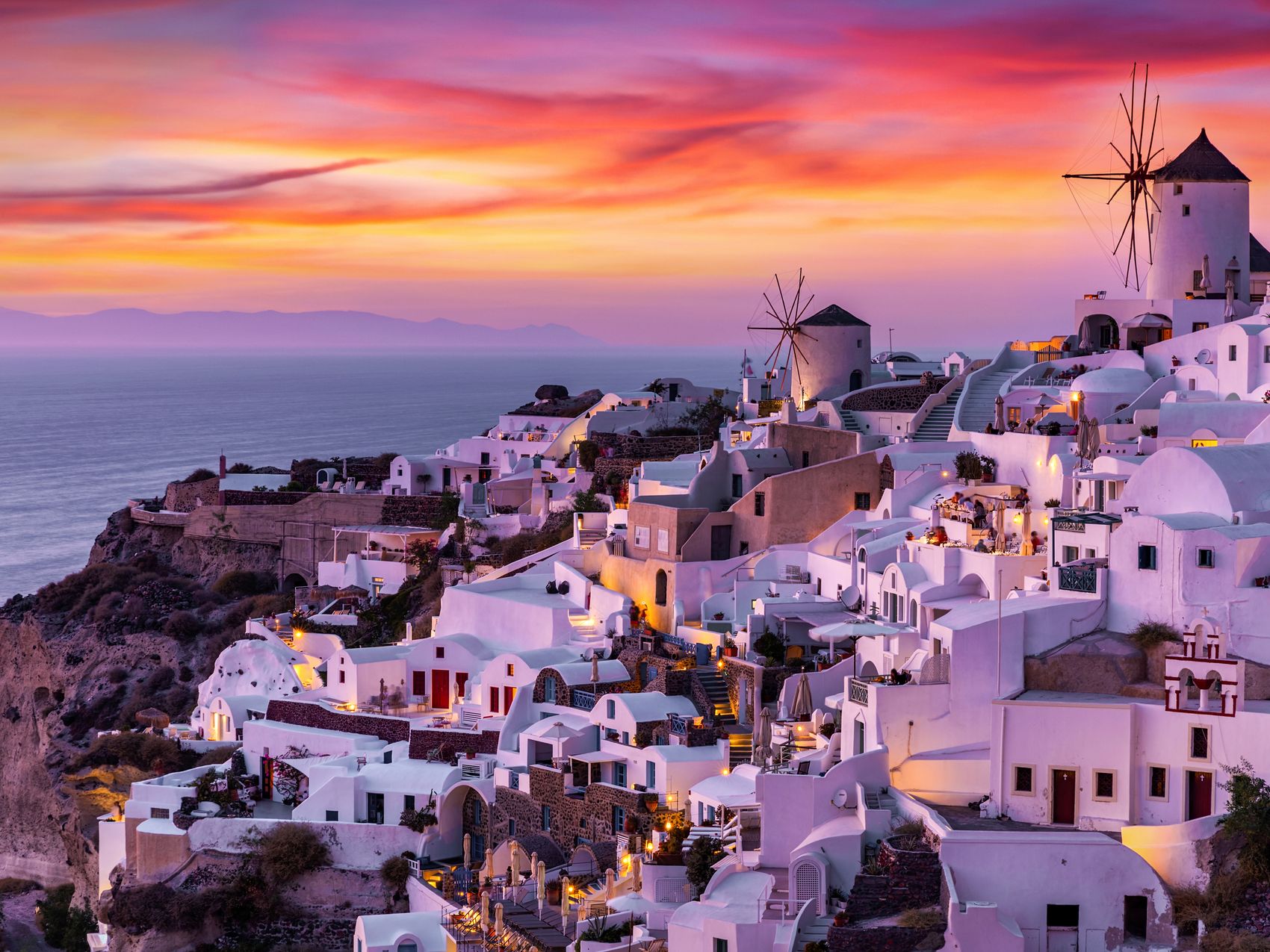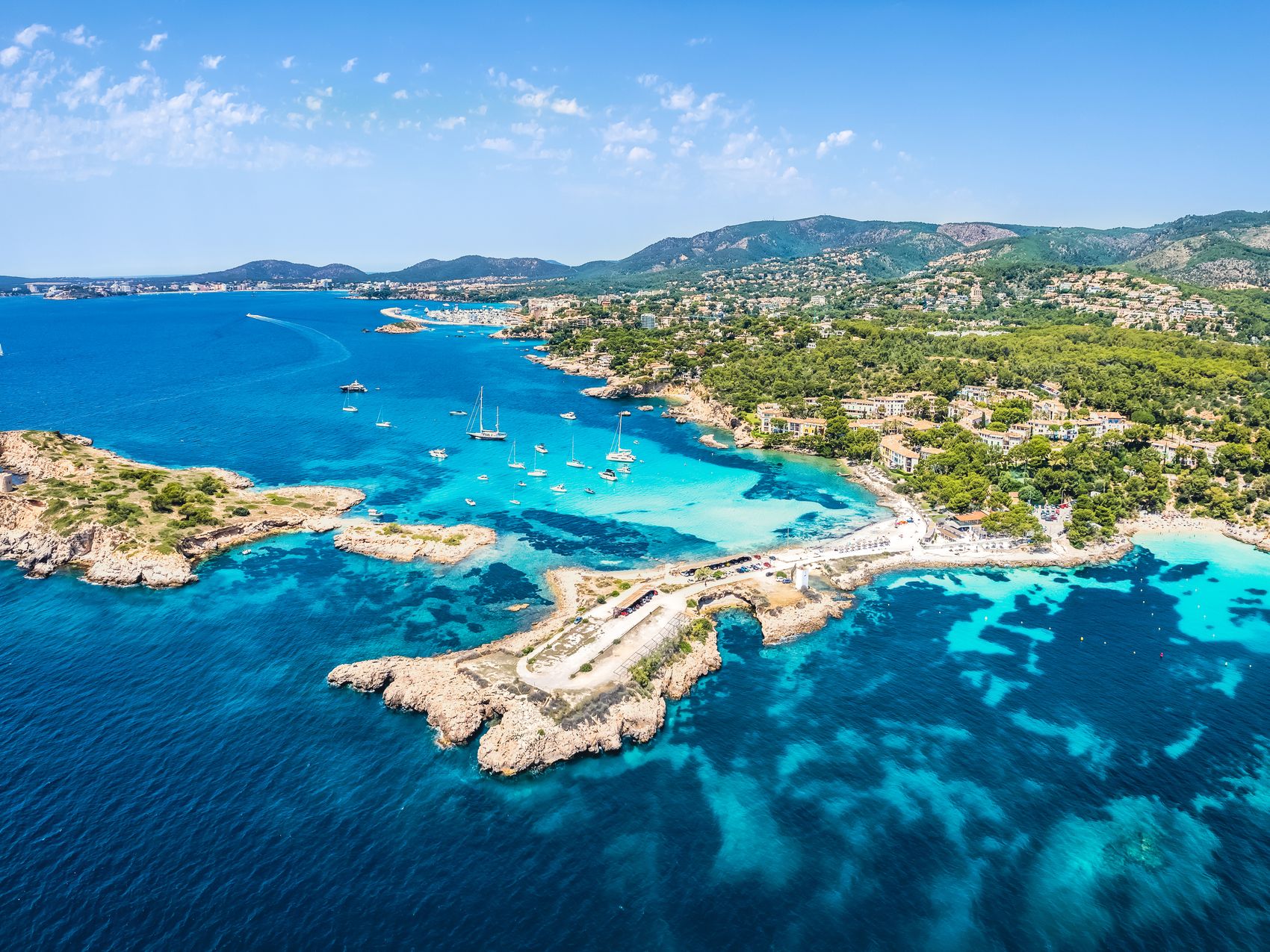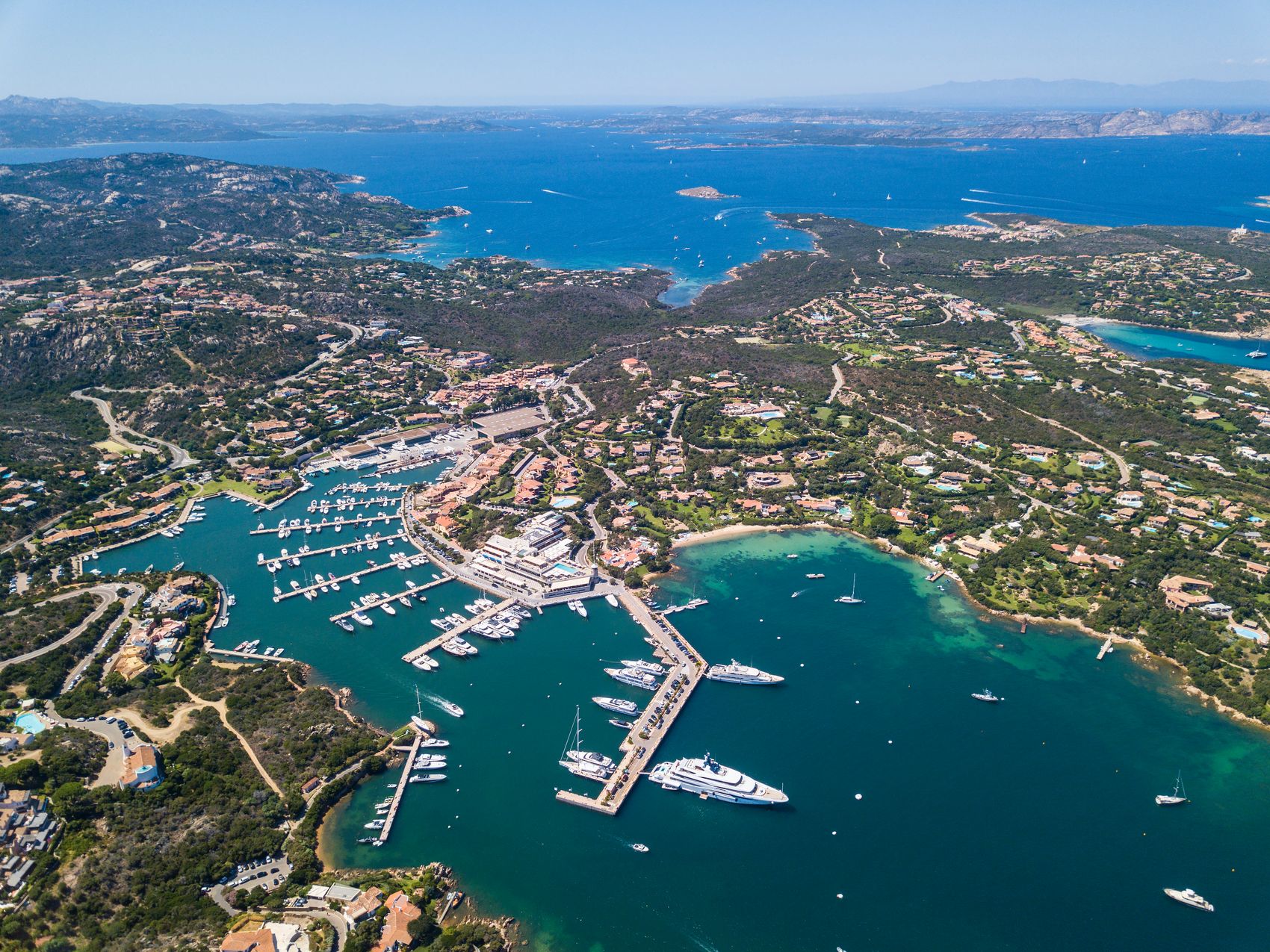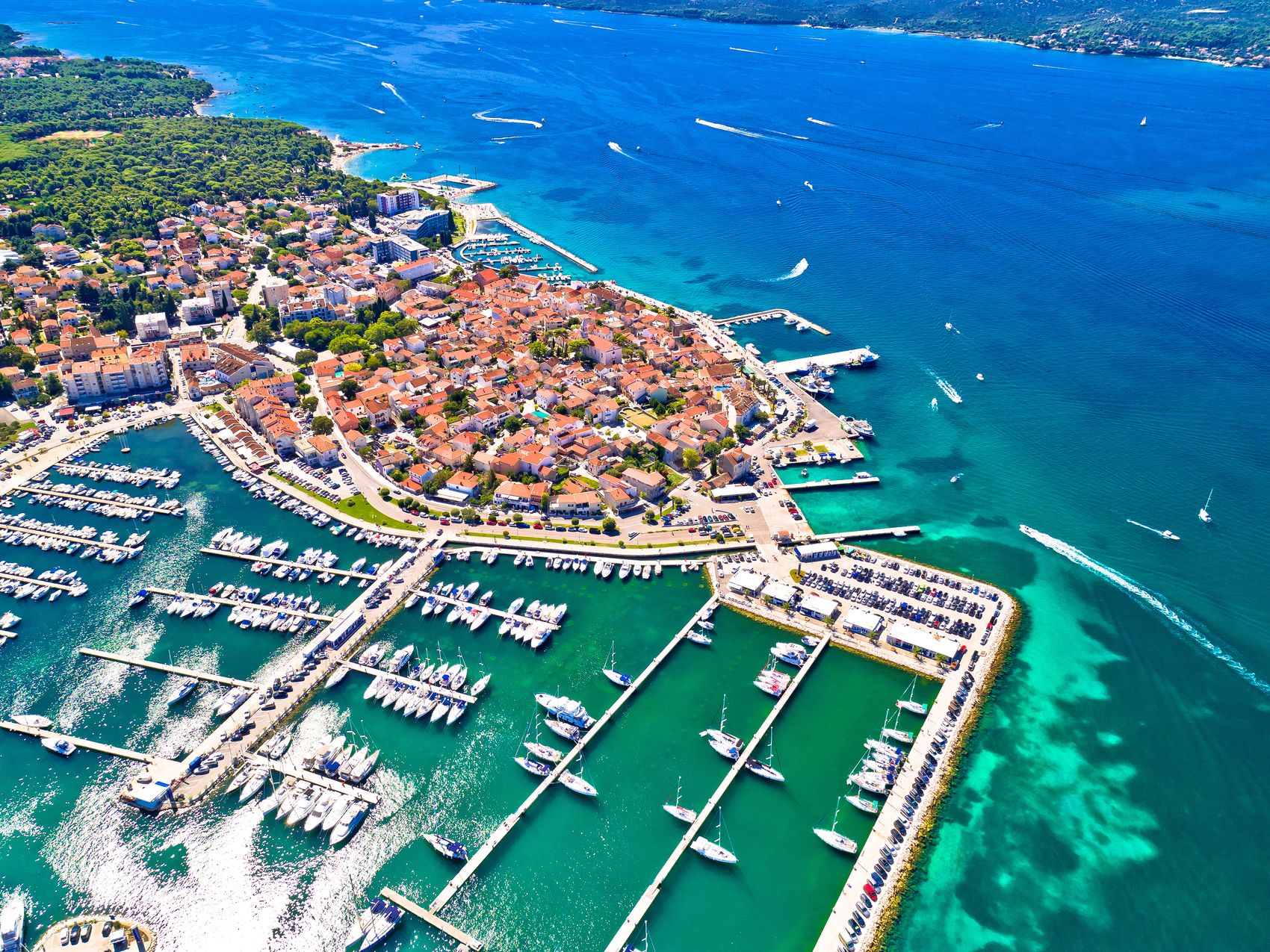The Aegean Sea stretches southeast of mainland Greece. It is dotted with several larger and smaller islands, which form two main archipelagos: the Cyclades and the Dodecanese. Today we will look together at the itinerary for an active cruise of the Cyclades.
The area is best known among more experienced sailors. The distances are longer (compared to popular Croatia), and the conditions are usually more demanding. On the other hand, you’ll be rewarded with fantastic sailing, many small and large ports and berths with friendly locals, reasonable prices and many historical and natural sights. You can roam between the islands for a long time and in various ways. There is something for everyone here. Only lovers of large and luxurious marinas will be disappointed - they will not find them here (yet).
In total, we divided the voyage into five parts:
- 1st part: Athens - Thira (Santorini) (130 NM), Sunday-Monday
- 2nd part: Thira - Naxos (40 NM), Tuesday
- 3rd part: Naxos - Mykonos (35 NM), Wednesday
- 4th part: Mykonos - Kythnos (50 NM), Thursday
- 5th part: Kythnos - Alimos (30 NM), Friday
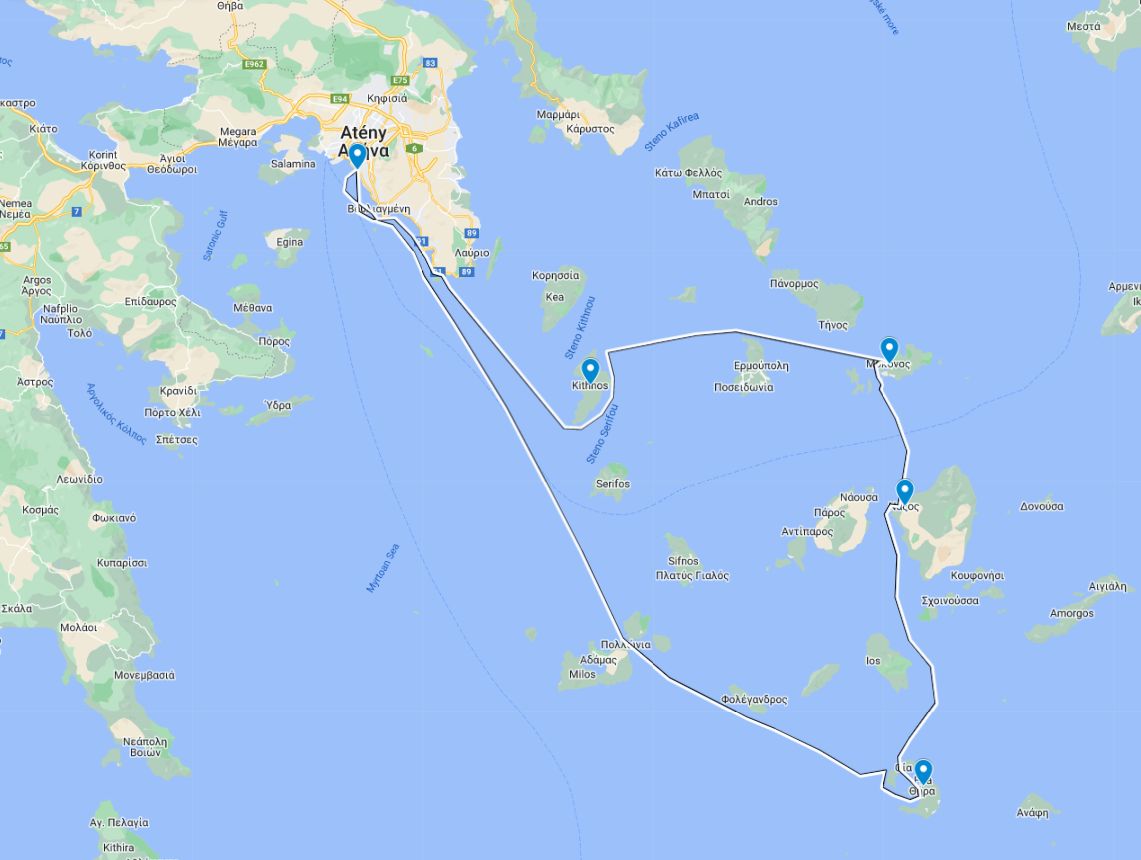
You can find a Google map with the Itinerary at this link.
Our starting point will be Athens. It is the capital of Greece, and many ancient monuments and archaeological sites are located in and around it. It offers many museums and cultural facilities, but also a rich nightlife, a wide range of shopping opportunities and, last but not least, a variety of culinary experiences. In addition, Athens is currently a hit, and you will meet a diverse international company, especially young people from all over Europe and the rest of the world. Therefore, when planning your cruise, bear in mind that the voyage might take longer when visiting this historic city.
Athens also offers a large selection of charter boats. Boats are usually very well equipped and maintained. There are several marinas in and around the city. We often start in the Alimos marina, located southeast of the city centre. Although you can’t expect any luxury, you will find a decent base here.
The area is accessible practically all year round, usually from March to November. From our experience, autumn is the best time of year. The water is warm for swimming, and there are reasonable daily temperatures, favourable wind conditions and relatively few tourists at sea and on land.
1st part of cruise: Athens - Thira (Santorini) (130 NM), Sunday-Monday
Our voyage will start pretty strongly. The first stage measures 130 NM, and given the current weather conditions, we can expect to spend 24 hours at sea. We will use Saturday to take over the ship, embark the crew and obtain supplies for the entire cruise. In the evening, we will go to bed early, tired from the long journey. In the morning, we will get up and leave the port around 6 am. It is good to plan patrols and expect the first day to be challenging.
The cruise will first take us along the coast to the southeast, leading to the giant port of Piraeus northeast of Athens. After about 30 miles, we pass the island of St. Agios Georgios, in which the “forest” of a huge wind farm is visible day and night. The strait between Kimolos and Milos will also serve as a landmark.
Milos, the one further south, is one of the two volcanic islands of the Cyclades (the other is Thira/Santorini). Three others surround the Aegean tectonic plate, and the African plate slides under it from the south, causing volcanic activity and earthquakes along this line (from west to Crete, in the east to Nysir and further to Turkey).
If all goes well, we will reach the strait in the daylight. We will find a suitable berth here (for example, near the village of Voudia), and we can peacefully cook and eat dinner and chill for a second before our next cruise. However, we can’t sacrifice much time, and we sail with full bellies into the darkness towards Santorini.
We will probably reach the finish line of this stage in the early hours of Monday morning. Santorini or the island of Thira is a remnant of a spectacular volcanic eruption about 3600 years ago. It is considered one of the most significant volcanic eruptions in history. The partially flooded caldera has the shape of a twice-broken ring with another small uninhabited island in the middle. Santorini is a well-known tourist destination. It has its own international airport, and in the primary season, you will meet a lot of tourists.

With a stroke of luck, we can moor the boat right at the old marina on the eastern inner side. When we wish to see the capital, we must go on a long, winding road that leads upward. You can rent a donkey or pay for a cable car if you don't feel like walking. There is a breathtaking view of the island’s indoor pool with a central island from the upper edge of the cliff. You will repeatedly come across iconic images known from all Greek guides and travelogues as you walk through the city. Blue painted vaulted roofs of churches, loads of white houses, blue sky, and sea. Cheesy but still beautiful…
The city tour will take us most of the day, and in the evening, we will go on a short cruise from the old port to the berth on the east coast of the central island. During the day, the tourists take motorboats from the main island, but in the evening, there is peace and the opportunity to moor at the concrete pier without any problems. If you still have some strength left, you can go on an island tour. We can observe several typical post-volcanic phenomena, among which a tangle of paths will guide us. Hot gas (often with a strong sulfur odour) and steam, hot springs and various lava formations are worth seeing.
2nd part of cruise: Thira - Naxos (40 NM), Tuesday
We have to get up early in the morning. Not because of the great distance that awaits us, but to leave the port before boats with tourists start arriving. We sail from the inner pool of the caldera through the northern strait. We head towards the island of Naxos, which lies to the north of us. On the way, we pass Ios - according to the current wind direction, we can sail around it to the left or right.
We have to be very careful about wind anomalies around the islands in Greece because they’re relatively high and often have steep cliffs. There is a rather long wind shadow behind them and an area of turbulent airflow, where the opposite wind usually occurs on the leeward side of the island. If you sail too close to the leeward coast, you take the risk of a sudden wind taking you to the high cliffs. You can’t get out of this situation without the quick help of the engine. The strong hum of the Melusine acoustically completes the whole phenomenon at the cliff - sirens from ancient myths and legends come to life again…
We will land on Nax in the port of the capital of the same name and go on foot to visit the nearby temple complex dedicated to the god Apollo in ancient times. It was built on a small peninsula connected to the city by a narrow passage.
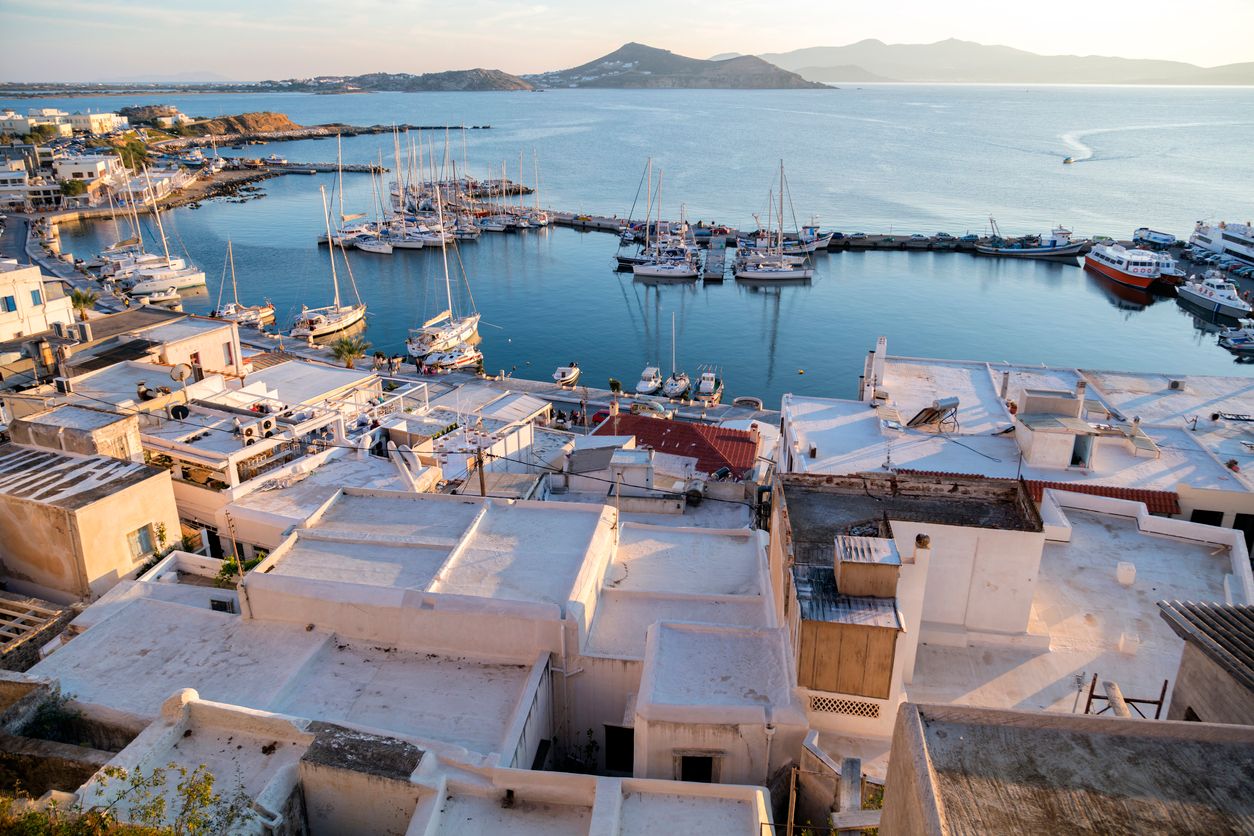
We will walk along a comfortable cobblestone paved path, and after a few minutes, we will reach the temple's remains. It has been partially reconstructed in modern times - one erect frame supported by a pair of original columns is visible from a distance. It gives a good impression of the actual size of the whole building. This area has some lovely romantic views. It is a charming place for quiet meditation.
We can conveniently buy supplies of fresh products in the city, and we can have a good dinner in one of the local taverns. If you choose one of the traditional Greek dishes and local wine, you won't be disappointed.
3rd part of the cruise: Naxos - Mykonos (35 NM), Wednesday
There’s no need to rush this morning, so we can take it slow. The port offers a good opportunity to practice mooring in the typical local way - that is, the rear part goes to the pier with the anchor thrown from the tip (which replaces the usual moorings from Croatia). Anyone who has never done this still needs a little practice to coordinate everything properly. When lowering the anchor, pay attention to the correct distance from the pier (far enough to hold the anchor well, close enough for the length of the chain to be sufficient) and at other ships and their anchors. In case of inattention, the anchor chains often cross, and when pulling out the anchor, not only ours but also the anchor of the neighbouring ship goes above the water…
When we have finished practising, we will travel north to Mykonos. We will head to the lighthouse on a small island south of the entrance to the strait along the west coast of Mykonos. The island to our left is called Delos and plays a vital role in Greek mythology, which considers it a sacred refuge and birthplace of the gods Apollo and Artemis. It hides an extensive archaeological complex with a museum. However, we will keep its visit until next time and continue through the strait to the new marina north of the capital Mykonos (here, it is good to book a berth by phone at least a day in advance).

After anchoring, we will go on a tour of the old town. The local ferry will save us from the long walk (the locals call it the "sea bus"). It runs between the new and the old port until late at night. Large cruise ships often moor in front of the port, bringing hundreds of tourists to the city. If we're lucky, the ship won't be there yet, and we can explore every aspect of the old town in peace. The place is full of shops, restaurants and other tourist services. But despite all the hustle and bustle, the city centre is lovely, so it's worth taking a stroll there.
4th part of the cruise: Mykonos - Kythnos (50 NM), Thursday
As we leave Mykonos, we head almost straight west. We sail around the nearby Syros, the most populous island of the Cyclades, from the north. After reaching the northern cape of the island of Kythnos, we turn along its coast to the southwest. After a few miles of sailing, we arrive at the entrance to Kolona Bay. We found a large berth at its northern shore with an optimal depth of about five meters. We will anchor and use the dinghy to get to the nearby beach, where we can relax after a long journey. A few steps from the seashore, there is a small natural lake, which is supplied by a hydrothermal spring. The water has an ideal temperature of about 38 degrees. The shallow pond can comfortably accommodate 2 to 3 people so that the crew will take turns. Whoever gets too hot (depending on what season you travel) can comfortably cool down by swimming in the sea bay.
We will go on a short trip east along the coast. After about half a kilometre, we come to a narrow sandy passage, which encloses the whole bay and thus separates it from the larger bay, which opens into the high seas a little further south. There is a small abandoned bar with a terrace on the slope above this “earth bridge". We can order a drink and enjoy the view of this natural miracle. If you want to walk a little further, you can cross the passage and see a small church on the opposite bank. Washed and pleasantly tired of the “natural hot tub” and walks, we return to the deck and go to rest.
5th part of the cruise: Kythnos - Alimos (30 NM), Friday
In the morning, we will swim in the bay in good weather, and after breakfast, we will set off on the last stage of our cruise back to Athens. We head northwest to cape Sounion. We see an ancient temple dedicated to the god Poseidon from a distance. In the old days, sailors gathered here before each long expedition, begged the gods for a happy return, and waited for the right wind. In the bay below the temple, we find an excellent berth and use the dinghy to get to the beach near the small hotel. From here, it is only a few minutes uphill to the entrance to the temple complex, which is an essential archaeological monument. We can also turn to Poseidon and thank him for a successful cruise in his territorial waters.
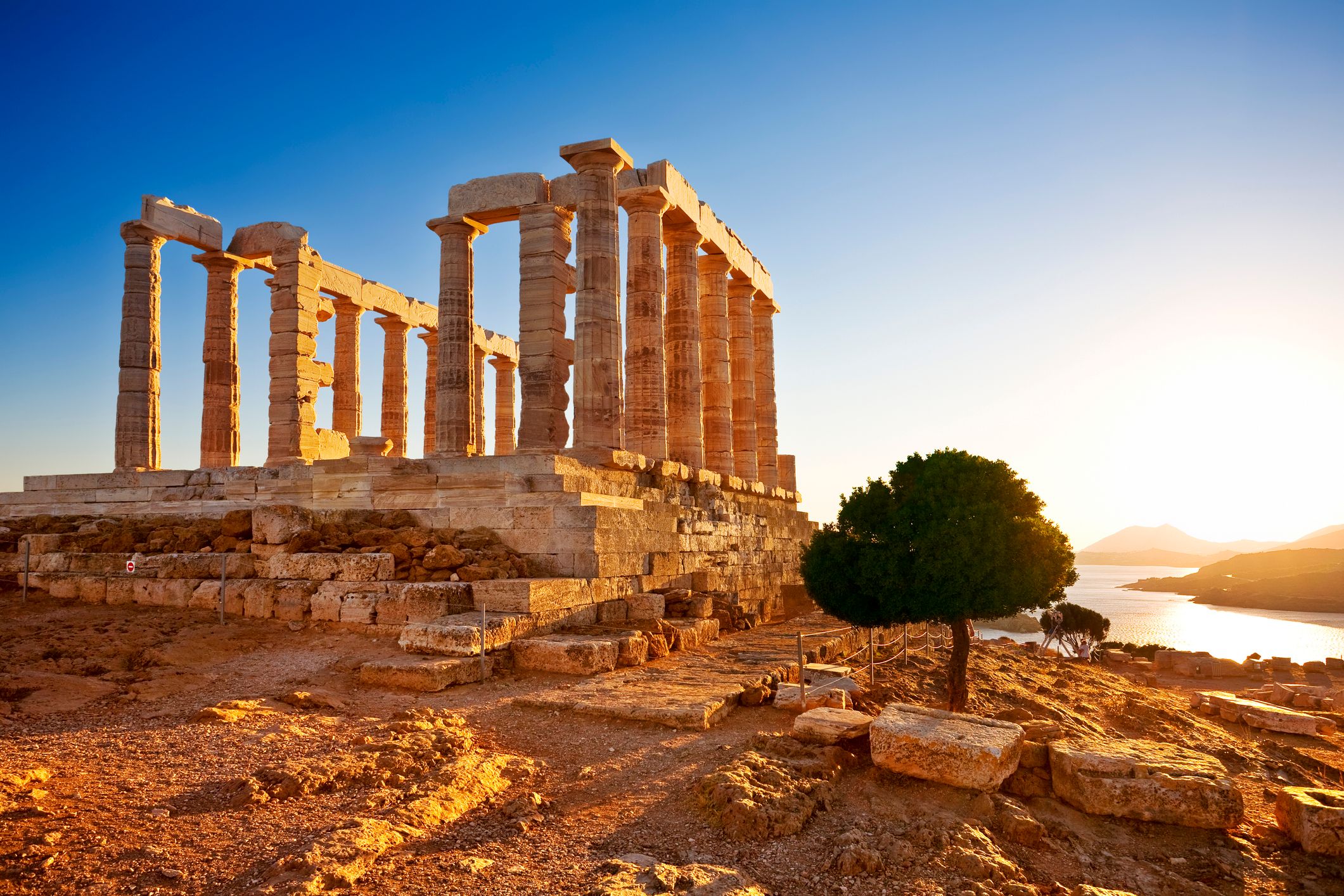
After returning to the boat, we will pull the anchor and head towards the Alimos marina, where we must arrive in the afternoon to take care of everything about the handover of the ship and its check.
We sailed a total of about 300 NM in a week, and we spent at least one night at sea. We visited famous sites and monuments and enjoyed secluded bays and moorings. I believe that whoever tastes sailing in Greece will want to keep coming back and find other beautiful places there.
Anyone who would not dare to go on such a demanding voyage on their own would be probably interested in annual cruises to Greece in the offer on the seatime.cz website. You will enjoy the cruise without worries under the guidance of experienced captains.
